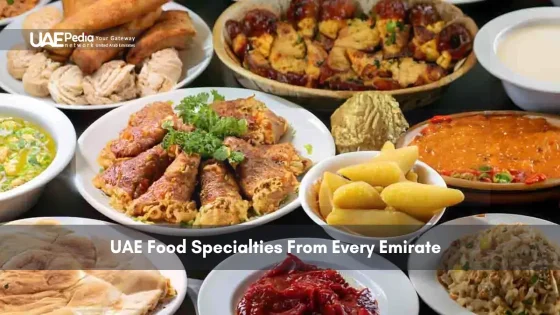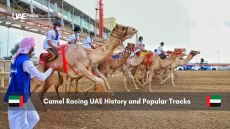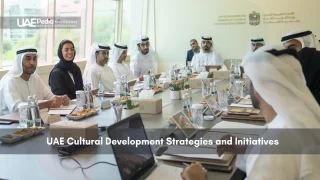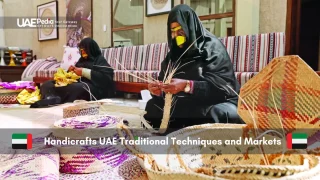What if we told you the world’s fastest land animals aren’t the only stars of Middle Eastern heritage? While camel racing grabs global attention, a vibrant tapestry of traditional sports thrives beneath the radar—where Bedouin ingenuity meets 21st-century stadiums.
This nation’s athletic roots stretch far beyond dunes. Think archery contests under starlit skies, falconry tournaments blending ancient instincts with GPS tech, and rowing competitions echoing pearl-diving traditions. These activities aren’t relics—they’re living threads in the country’s cultural fabric, evolving alongside skyscrapers while honoring ancestral skills.
We’ll walk you through hidden arenas where camel handlers share secrets passed through generations. You’ll discover how coastal communities transformed fishing nets into championship-worthy rowing teams. Along the way, expect practical tips: where to catch thrilling saluki dog races or try your hand at date-palm climbing.
- Cultural significance: How Bedouin survival skills became celebrated national pastimes
- Historical roots: The surprising origins of activities like al tawala (stick fighting)
- Modern adaptations: From robot jockeys in camel racing to falconry airports
- Practical guidance: Where and when to experience these events authentically
Ready to swap tourist clichés for genuine connection? Let’s explore the arenas where history’s heartbeat syncs with today’s adrenaline.
Exploring the Rich Heritage of Emirati Sports
Picture this: survival tactics turned spectator events. The same skills that kept desert communities alive now fuel packed stadiums and community festivals. How did Bedouin resourcefulness evolve into today’s adrenaline-packed activities? Let’s unpack the layers.
Historical Context and Bedouin Roots
Centuries ago, the harsh environment demanded more than endurance—it required innovation. Falconry began as a hunting necessity, while camel handling ensured trade routes thrived. Even children’s games like al dahi (goat grabbing) sharpened reflexes for adulthood.
“Our ancestors didn’t see these as pastimes—they were lifelines. Today, they’re bridges connecting generations.”
| Traditional Activity | Modern Adaptation | Cultural Impact |
|---|---|---|
| Desert navigation | 4×4 dune bashing | Teaches terrain mastery |
| Pearl diving | Rowing championships | Honors maritime heritage |
| Stick fighting | Martial arts festivals | Builds discipline |
Cultural Significance in Modern UAE
In Abu Dhabi, heritage isn’t preserved—it’s lived. Take the Al Dhafra Festival, where camel beauty contests draw crowds bigger than some pop concerts. These events aren’t just fun—they’re identity markers. Locals proudly share stories of ancestors who mastered these skills.
Community participation fuels the magic. Weekly sports UAE clubs teach teens archery techniques used by their great-grandparents. As one Abu Dhabi coach told us: “When kids hold a falcon’s leash, they’re holding history.”
Understanding UAE Traditional Sports and Its Cultural Significance
How does a desert survival drill become a weekend thrill? The answer lies in generations adapting to their environment—turning daily challenges into communal celebrations. Scorching sands and scarce resources forged activities that now draw cheering crowds.
Origins in Desert Survival
Every skill had purpose. Tracking stars meant avoiding deadly dunes. Training falcons put food on the table. Even children’s games like al-halqous (stone tossing) sharpened aim for hunting. As one historian notes: “You either mastered these techniques or didn’t survive the season.”
Evolution into Recreational Activities
Communities transformed necessity into artistry. What began as hunting drills became archery tournaments under floodlights. Camel endurance trials birthed racing leagues with robot jockeys. These shifts didn’t erase history—they rewrote it for new audiences.
- Navigation races → Modern dune bashing championships
- Pearl diving breath-holding → Freediving competitions
- Stick combat practice → Martial arts festivals
Today’s events honor ancestral grit while adding flair. Take the Al Ain Falconry Championship, where birds of prey hunt drones instead of hares. It’s not just about winning—it’s connecting yesterday’s survivalists with tomorrow’s champions.
Camel Racing: Legacy and Modern Adaptations
What began as a wedding dance evolved into a multimillion-dollar sport. Centuries ago, racing camels marked celebrations—grooms showcasing prized animals while villages cheered. Today, those same thundering hooves kick up dust in air-conditioned stadiums, blending heritage with high-tech spectacle.
From Wedding Ceremonies to Premier Competitions
Training champion camels now rivals Formula 1 prep. Athletes follow strict diets: dates for energy, bran for digestion, oats for stamina. “We track every mile they run and liter they drink,” says a Dubai-based trainer. “It’s science wearing Bedouin robes.”
Nad Al Sheba Racecourse redefines the game. Solar-powered starting gates sync with RFID chips in camel’s ear tags, clocking speeds down to milliseconds. Prize pools? Think luxury cars and seven-figure checks. Last season’s Al Marmoom Championship drew 15,000 fans—proving desert roots still grip modern hearts.
“Racing isn’t just sport here—it’s our ancestors smiling through the sandstorms.”
Yet tradition persists. Handlers still sing hadud songs to calm camels pre-race. Robot jockeys wear miniature silks honoring tribal colors. From dunes to digital scoreboards, this isn’t just racing—it’s history sprinting forward.
Falconry and Equestrian Traditions: A Timeless Bond
Imagine holding a creature that sees eight times farther than you—a partnership where trust decides dinner or dust. This is falconry’s raw essence, perfected over 4,000 years. Bedouin hunters once relied on these raptors’ pinpoint strikes to survive arid landscapes. Today, their descendants honor that legacy through meticulously preserved arts.
Ancient Practices and Royal Endorsements
Training a falcon requires more patience than a chess grandmaster. Handlers spend months bonding with birds using al-malqaa—a leather hood that builds trust through controlled darkness. “You’re not just teaching hunting,” says a third-generation Emirati trainer. “You’re learning their language.”
Royal influence transformed this survival skill into high art. The President’s Cup Falconry Competition draws global enthusiasts, while endurance rides like the Dubai Crown Prince’s Challenge showcase Arabian horses’ legendary stamina. These events blend ancestral pride with modern spectacle:
- Falcons now wear GPS trackers during hunts
- Horse breeders use DNA testing to preserve bloodlines
- 160km desert races test both rider and steed
“Falconry isn’t a hobby—it’s written in our DNA. When my grandfather hunted, he carried our family’s honor on his wrist.”
Modern festivals reveal why these traditions endure. At the Al Dhafra Heritage Festival, you’ll find falcon beauty contests judged faster than runway models. Equestrian shows pair thoroughbreds with holographic projections. Yet beneath the dazzle lies unchanged truth: human and beast, bound by respect older than skyscrapers.
Water Sports in the UAE: Dhows and Free Diving Adventures
Think wooden sails cutting through turquoise waves—crafts that once carried fortunes now fuel heart-pounding races. Alongside these iconic boats, freedivers plunge into depths where pearl hunters once risked everything. Let’s chart how maritime mastery became modern thrill-seeking.
Commerce, Racing, and Leisure
Centuries ago, dhows—called sambuks locally—were floating lifelines. These vessels hauled pearls from oyster beds and spices across the Gulf. Today, their crescent-shaped hulls dominate waterfronts as racing champions and sunset cruise icons.
Winter transforms coastlines into competition zones. The Dubai International Marine Club hosts dhow races where crews battle 22-knot winds. “It’s not just speed,” says a veteran captain. “We’re steering our grandfathers’ legacy—every tack honors their navigation tricks.”
| Era | Dhow Use | Cultural Impact |
|---|---|---|
| Pearling Age | Trade & pearl transport | Economic backbone |
| Modern Day | Racing leagues Luxury charters |
Tourism draw Youth engagement |
Pearling Heritage and Competitive Spirit
Free diving began as breath-holding marathons—pearl divers staying submerged for three minutes without gear. Now, athletes chase records in crystal pools at events like the Fujairah Freediving Challenge. Safety boats and depth sensors replaced risk, but the adrenaline remains.
Major sports events blend old and new:
- Annual Al Gaffal Dhow Race (60km endurance test)
- Abu Dhabi Freediving Championship (held at Louvre’s lagoon)
- Heritage dhow shipyards offering build-your-own workshops
“Our ancestors dove without tanks or watches—just courage and lung power. When I compete, I feel their hands pushing me deeper.”
Modern facilities elevate these traditions. Marinas now feature freediving platforms with real-time biometric tracking. Yet walk any dock, and you’ll still hear captains swapping tales older than their boats—proof that saltwater runs through this nation’s veins.
Saluki Racing: Celebrating Speed and Heritage
Picture lean silhouettes blurring across golden sands—desert-born athletes clocking 45 mph without breaking stride. These aren’t sprinters, but Salukis: sleek hounds whose ancestors hunted gazelles alongside Bedouin tribes. Today, their descendants chase glory in races blending ancestral grit with modern spectacle.
Training Traditions and Community Pride
Preparing these dogs requires equal parts science and soul. Trainers follow regimens passed through generations: morning runs across dunes to build stamina, evening sprints timed with sunset shadows. “We balance GPS trackers with intuition,” says a veteran handler at the Hamdan bin Mohammed Heritage Center. “A Saluki’s eyes tell you when they’re ready to fly.”
Local communities rally around these events like hometown football games. Grandparents share stories of hunts where a single Saluki could feed a family for weeks. Now, races draw crowds cheering for favorite breeds as if they’re star players. Prize pools? Think luxury SUVs and golden trophies taller than the dogs.
“When my Saluki wins, it’s not just my victory—it’s our village’s pride echoing across centuries.”
Major competitions reveal why this tradition thrives:
- Annual Al Wathba Challenge tests raw speed over 1km courses
- Youth programs teach ethical breeding practices
- Heritage festivals feature “best in breed” showcases
From desert hunting partners to stadium champions, Salukis embody a legacy that outpaces time. Their races aren’t mere competitions—they’re love letters to history, penned with pounding paws and desert dust.
Archery and Shooting: Mastering Traditional Precision
Ever pulled a bowstring that once defended desert caravans? Archaeologists found 3,000-year-old arrowheads near Al Ain—proof that precision marksmanship shaped this region’s survival. Today, those same skills fuel laser-guided tournaments and adrenaline-packed community events.
Reviving Ancient Skills Through Modern Practice
Modern ranges like Jebel Ali Shooting Club transformed target practice. Bulletproof glass walls meet air-conditioned lanes where beginners learn alongside Olympians. “We’re not just teaching aim,” says a coach. “We’re passing down focus—the kind that kept watchtowers safe centuries ago.”
Clubs blend heritage with tech:
- Recurve bows modeled after Bedouin designs
- Digital scoring systems tracking millimeter-perfect shots
- Youth programs using 3D-printed replicas of historical weapons
Competitions and Skill Development
Annual competitions turn quiet focus into roaring crowds. The Al Dhafra Archery Championship draws 200+ players, while the Emirates Shooting Competition awards golden falcon trophies. These events aren’t just games—they’re talent incubators.
Watch first-timers at Al Forsan Sports Resort. Teens in kanduras balance compound bows like their ancestors held date palms. Safety protocols ensure every shot honors tradition without risking progress. As one participant grinned: “My grandfather’s ghost would high-five me…if he could stop staring at the holographic targets.”
“Precision sports build more than trophies—they forge discipline that spills into daily life. Every bullseye echoes our past.”
Modern Influences and the Evolution of Traditional Sports
Step into a training facility where laser-guided falcons sync with drones—this isn’t sci-fi, but today’s upgraded heritage. Cutting-edge tech now elevates centuries-old practices, creating arenas where Bedouin wisdom meets Silicon Valley precision.
Integration of Technology and Infrastructure
Advanced facilities are rewriting the rules. At the Al Marmoom Falconry Complex, GPS trackers monitor birds’ flight patterns while AI analyzes hunting techniques. “We’re not replacing tradition,” says a tech director. “We’re giving it sharper tools to thrive globally.”
Race tracks now feature:
- Sensor-embedded surfaces measuring camel hoof impact
- Climate-controlled stables with biometric monitoring
- Augmented reality simulators for jockey training
These developments boost safety and performance levels. Events like the Abu Dhabi Desert Challenge use RFID timing chips—accurate to 0.001 seconds—while preserving the raw excitement of dune racing. International athletes now flock to competitions, drawn by world-class facilities rivaling Olympic venues.
“Our ancestors raced by sun position. Now we use satellite sync—but the hunger to win? That’s timeless.”
Digital platforms transform how fans engage. Live-streamed archery tournaments gather millions worldwide, while mobile apps let users bet on robot-jockey races. Yet behind every innovation, you’ll find elders ensuring cultural roots stay intact. The balance? Heritage steering progress, not chasing it.
Sports Governance and Cultural Preservation in the UAE
Who keeps ancient games thriving in the age of VR? Behind every camel race and falconry tournament lies a network of visionary stewards—government bodies and sports federations blending heritage with global standards. These architects of athletic legacy ensure centuries-old practices don’t just survive, but sparkle on modern stages.
Guardians of the Game
The General Authority of Sports acts as both curator and innovator. Recent laws mandate heritage components in youth programs—think archery clubs teaching star navigation alongside bullseye techniques. Local councils fund community leagues where elders coach teens in stick fighting, creating living bridges between eras.
| Initiative | Impact | Global Recognition |
|---|---|---|
| Dubai World Cup | Unites 90+ nationalities | Largest purse in horse racing |
| Abu Dhabi Falcon Hospital | Trains 500+ handlers yearly | UNESCO partnership |
| National Sports Strategy 2031 | 50+ heritage venues built | World Economic Forum case study |
Stadiums as Storytellers
Major events double as cultural showcases. At the Dubai World Cup, Bedouin poetry recitals open races watched by 60,000 fans. Clubs like Al Ain Equestrian weave traditional music into show jumping competitions—proving heritage amplifies, rather than hinders, global appeal.
One federation leader puts it plainly: “We’re not hosting a world cup—we’re inviting the world into our living room.” This philosophy fuels events where camel beauty pageants share billing with drone light shows, and freediving records are set in museum lagoons.
- Annual Al Dhafra Festival attracts 250,000 visitors
- Sharjah Heritage Days feature 40+ traditional competitions
- Government grants cover 80% of youth sports club fees
“Every finish line crossed here writes a new chapter in our national story.”
Embracing the Future: Celebrating the Spirit of UAE’s Traditional Sports
Imagine arenas where history’s heartbeat syncs with tomorrow’s tech—welcome to the evolving saga of the Emirates’ athletic legacy. From robot-jockeyed camel races to AI-enhanced falconry, these activities prove heritage isn’t frozen in time. They’re living traditions sprinting toward innovation, fueled by world-class facilities and global traditional sports enthusiasm.
Look at Dubai’s skyline: beneath its shimmer, communities gather at Meydan Racecourse for horse endurance challenges blending Bedouin grit with biometric tracking. Over in Abu Dhabi, freedivers chase records in Louvre Abu Dhabi’s lagoon—a poetic nod to pearl divers of old. These events aren’t just spectacles; they’re bridges between generations.
Clubs and federations keep the flame alive. Youth archery programs teach star navigation alongside bullseye techniques. Government grants ensure every village has access to sports leagues where elders coach teens in ancestral skills. The result? A nation where desert wisdom fuels futuristic stadiums.
Ready to join the movement? Whether you’re cheering at the Dubai World Cup’s camel beauty pageants or training alongside Saluki handlers, your presence writes the next chapter. Here, every finish line crossed honors yesterday’s legends while inviting tomorrow’s pioneers.
Falconry holds a sacred place—think of it as the original “extreme sport” where hunters and birds partner like athletes. Today, royal-backed festivals and desert camps let you witness these aerial acrobats up close.
Survival skills became spectacle! Desert navigation birthed endurance horse racing, while pearl diving evolved into freediving contests. Even saluki racing echoes nomadic hunting traditions—only now, crowds cheer at tracks near Al Ain.
Head to Al Marmoom Heritage Village in Dubai or Abu Dhabi’s International Hunting & Equestrian Exhibition. Many desert resorts like Qasr Al Sarab also offer hands-on sessions with expert handlers.
Most are free! Camel races at Al Wathba or dhow regattas in Umm Al Quwain welcome spectators. Premium experiences—like private falconry lessons or VIP seats at the Dubai World Cup—start around 0.
Once cargo ships, dhows now glide as sleek racing vessels. Emirates Dhow Racing Federation events mix ancient rigging techniques with GPS tracking—catch a race during Dubai Maritime Festival or Qatar-UAE Championship.
Al Ain’s Jahili Fort area hosts weekend tournaments, while clubs like Abu Dhabi Archery School offer beginner courses. For authenticity, visit during Ramadan nights when neighborhoods buzz with impromptu contests.
These “royal dogs” symbolize Bedouin generosity—they were gifted to honor alliances. Modern races at Sweihan tracks blend pride in lineage (dogs wear embroidered gear) with adrenaline, plus hefty prizes for top breeders.
From robot jockeys in camel races to climate-controlled falcon hospitals, authorities balance innovation with tradition. The Ministry of Culture funds youth programs, while UNESCO-recognized practices get spotlighted during National Day festivals.
Absolutely! Camel races have kid zones with camel rides, and Sharjah’s Heritage Days feature puppet shows explaining sports history. Ladies-only archery classes at Dubai Club cater to all skill levels.
Solar-powered timing systems at camel tracks, 3D-printed falcon hoods, and AI tools analyzing horse gaits. Yet the soul remains—you’ll still hear oud players at award ceremonies and smell cardamom coffee in winner’s circles.


















